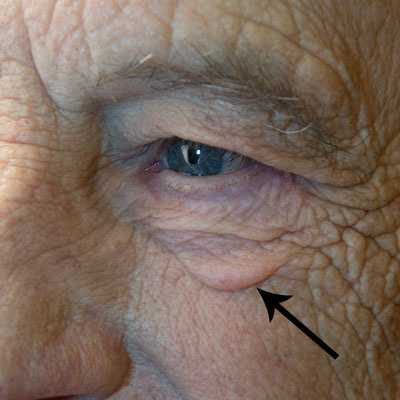Learn more about Festoons, pockets of swelling that form on the upper cheeks where they meet the thin skin of the eyelids, including their causes and available treatments.
What are festoons?
Festoons, also called cheek festoons, eyelid festoons or malar festoons, are pockets of swelling that usually form on the upper cheeks where they meet the thin skin of the eyelids. They are not your normal lower eyelid bags, but are collections of fluid under the skin, due to a combination of genetics, sun damage and poor lymph drainage. They can be worse in smokers or people with systemic diseases which affect fluid balance. Festoons can be unsightly and make the face appear tired and prematurely old.
How are they treated?
There are several treatments available for festoons, including injection with sclerosing agents (doxycycline), which creates scarring and changes in the skin and surgical removal of the abnormal skin. Both treatments work well and an examination can determine which is right for you. In either case, scarring tends to be minimal and the improvement in appearance can be dramatic. Festoon repair is not normally covered by insurance, as it does not usually affect vision. We often repair festoons along with other procedures, including upper and lower eyelid blepharoplasty, so that a patient’s complete mid-face is addressed and they can recover from both procedures simultaneously.
What is the recovery?
Depending on the type of surgery for festoons, you may have bruising and swelling, which will last 1-3 weeks. If surgical removal is performed, you will have sutures that will dissolve in 10-14 days. Using ice aggressively in the first 48 hours will reduce swelling. There is generally very little pain afterward.


